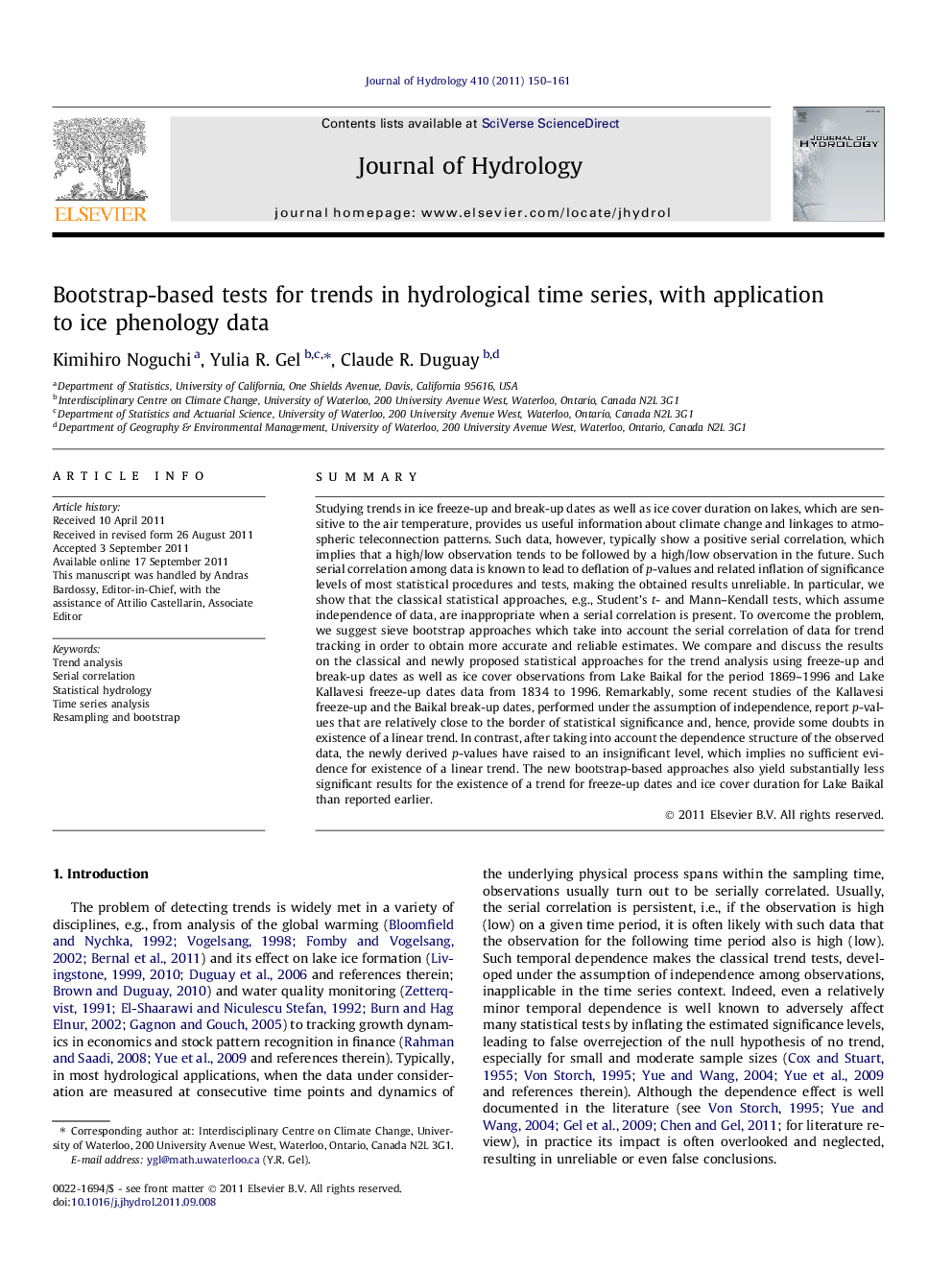| Article ID | Journal | Published Year | Pages | File Type |
|---|---|---|---|---|
| 4577309 | Journal of Hydrology | 2011 | 12 Pages |
SummaryStudying trends in ice freeze-up and break-up dates as well as ice cover duration on lakes, which are sensitive to the air temperature, provides us useful information about climate change and linkages to atmospheric teleconnection patterns. Such data, however, typically show a positive serial correlation, which implies that a high/low observation tends to be followed by a high/low observation in the future. Such serial correlation among data is known to lead to deflation of p-values and related inflation of significance levels of most statistical procedures and tests, making the obtained results unreliable. In particular, we show that the classical statistical approaches, e.g., Student’s t- and Mann–Kendall tests, which assume independence of data, are inappropriate when a serial correlation is present. To overcome the problem, we suggest sieve bootstrap approaches which take into account the serial correlation of data for trend tracking in order to obtain more accurate and reliable estimates. We compare and discuss the results on the classical and newly proposed statistical approaches for the trend analysis using freeze-up and break-up dates as well as ice cover observations from Lake Baikal for the period 1869–1996 and Lake Kallavesi freeze-up dates data from 1834 to 1996. Remarkably, some recent studies of the Kallavesi freeze-up and the Baikal break-up dates, performed under the assumption of independence, report p-values that are relatively close to the border of statistical significance and, hence, provide some doubts in existence of a linear trend. In contrast, after taking into account the dependence structure of the observed data, the newly derived p-values have raised to an insignificant level, which implies no sufficient evidence for existence of a linear trend. The new bootstrap-based approaches also yield substantially less significant results for the existence of a trend for freeze-up dates and ice cover duration for Lake Baikal than reported earlier.
► We propose a new robust sieve bootstrap approaches for trend detection. ► The proposed resampled based procedures well preserve Type I Error, across a variety of temporal correlation structures. ► The new methods are distribution-free.
